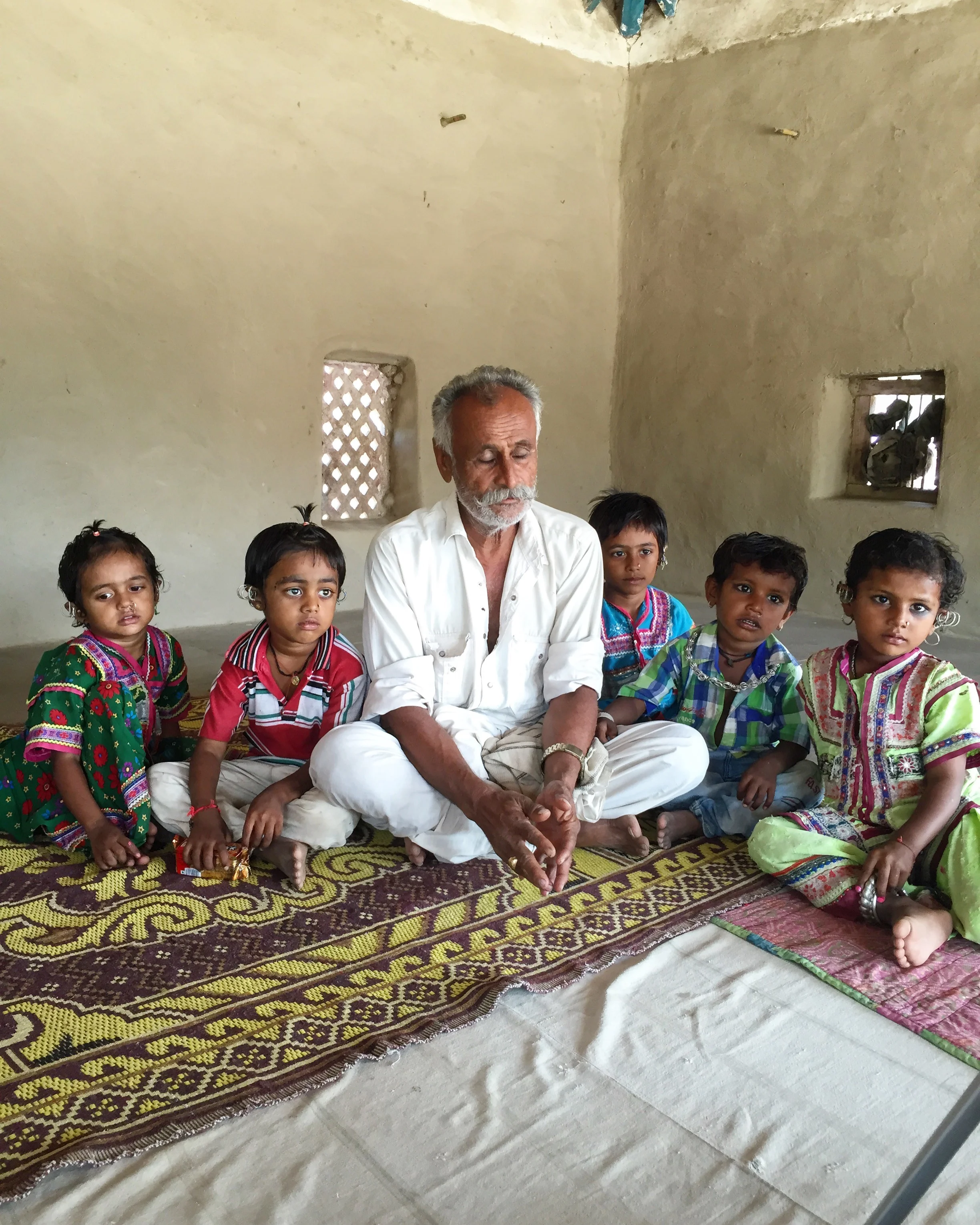Going to "The Field"
“It’s always refreshing to go to the field,” one of my new colleagues at Khamir remarked to me recently. We’ve been visiting “the field” all week, interviewing leather artisans all over the region of Kutch. Clusters of artisans live in tiny villages in the middle of the desert, making intricate handicrafts with leather and embroidery. The men are dressed in loose white kurta-pajamas, the women wear impossibly elaborate costumes for their daily life. Tunics covered in dense, tiny stitches, open in the back. Large, golden earrings and nose rings, heavy silver necklaces. Arms so laden with bangles that you can’t see the arm underneath.
The village of Hodka
Many of of the artisans' homes were destroyed in the 2001 earthquake that hit the region very hard. They’ve seen their craft dwindle as they struggle to compete in a marketplace saturated by industrially made products. People are flexing to meet new demands while maintaining links to their traditions. There was no single way to practice the craft. One elderly artisan told us he would be content always making traditional, heavy leather shoes. Others were happy to try using different materials or styles to see what might work in a contemporary market.
In leather, this ability to fluidly shift between contemporary markets and preserving generations of craft may come easier than in other artisan communities. Ajrakh printers create fabric in a painstaking process. With highly detailed wooden blocks, they press layer after layer of natural dyes and resist prints into yards of cotton and silk. The resulting fabric is evenly patterned, but with charming irregularities that reveal a human touch. It’s tough to compete with screen printing, though. In a single stroke, printers can swipe dye across a screen and apply patterns to a swath of fabric that could take an hour with a block print. The average consumer cannot see the difference.
With leather, however, there is demand for both high and low. Real leather will always have a market among higher end consumers who see it as a status symbol, among tourists who are interested in traditional goods, and among local villagers who value the material for its durability. Newer faux leathers (“rexine”) can also help leather artisans sustain themselves by making quick, colorful products for lower-end markets that sell easily and are cheap to create.
It’s true, what my colleague says about these visits to villages being refreshing. I come back to the office full of new ideas for projects, puzzling over new challenges, and inspired by the resilience of the communities we’ve visited. When she uses the phrase “the field,” a term which is often used in development work, my colleague means a place that is far from our office environment. It’s a useful shorthand to refer to the places where our target populations live. Those places which feel so “other” to where we’re used to living and working.
For me, though, all of Bhuj and its surroundings are new and different. I see things every day that make me laugh, frustrate me, bring me joy, confound me, and force me to adapt. There was the challenge of locating and employing a water guy, cleaning lady, clothes washer, plumber, Akash at Vodafone, and Sachinbhai the secondhand fridge man. Every morning I navigate around placid cows and dodge screaming auto rickshaws to catch the shared Jeep to the desert campus of Khamir. This week, along the road to work, there are streams of people making a piligrimage to Matanamadh, hundreds of kilometers away. I saw parents walking side by side, each holding the ends of a scarf to form a makeshift hammock hanging down with their baby inside .
Ainu Mahal (palace in the old city of Bhuj)
Then there is our neighborhood, Julelal Society- in the gully in front of the Swaminarayan Temple - as I’ve learned to describe it to auto wallahs. We experienced the exuberance of Ganesh Chaturthi, when our neighbors warmly welcomed us to their festivities and included us in dancing and puja. They even burst into our home unexpectedly the next day to invite Ted to join them in sending off their Ganesh statue into the sea, some 45 km away.
The artisans are adapting to change, as am I. I’ve started to see how they’re inspired by new challenges and apply their past experiences to their present life. I hope that I too can learn to do the same, gaining new energy and creativity while here in Bhuj.
Hanging out with new friends on our terrace


























